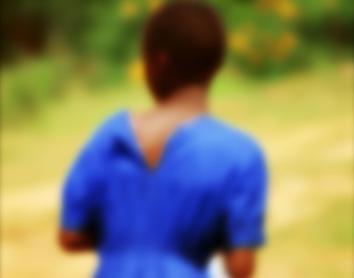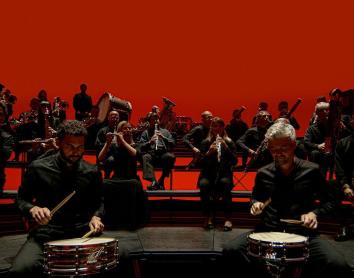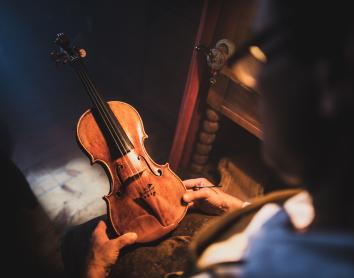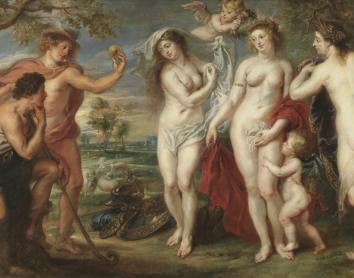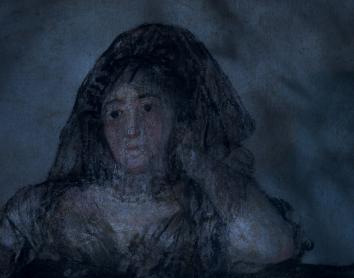![Henri Matisse, "Le Rêve" [The dream], may 1935. Centre Pompidou, París. Musée national d’art moderne / Centre de création industrielle AM 1979-106.](https://imagenes-mediahub.fundacionlacaixa.org/files/image_414_371/files/fp/uploads/2025/08/26/68ada56c233a2.r_d.806-1000-2568.jpeg)
An immersive ode to nature, Matisse, blurring in art, and a mammoth, all in the new season at CaixaForum Barcelona and CosmoCaixa
02.09.25
13 minutes readIn the 2025–2026 season, CaixaForum Barcelona will host exhibitions exploring the career, evolution, reach and influence of French painter Henri Matisse; the cultures and traditions of the inhabitants of the Pacific Islands; artists who have embraced the technique of blurring, taking inspiration from Claude Monet’s Water Lilies series; and an immersive ode to nature. Meanwhile, CosmoCaixa will revamp its Universe Hall with a range of new features, including a genuine fossil of a Siberian mammoth, while also enhancing its Planetarium with engaging programmes for audiences of all ages.
The director of Exhibitions, Collection and CaixaForum+ at the ”la Caixa” Foundation, Isabel Salgado; the director of CaixaForum Barcelona, Mireia Domingo; and the director of the CosmoCaixa Science Museum, Valentí Farràs, presented the new 2025–2026 exhibition season for both centres on Tuesday, under the slogan We believe in culture as a driver of social transformation.
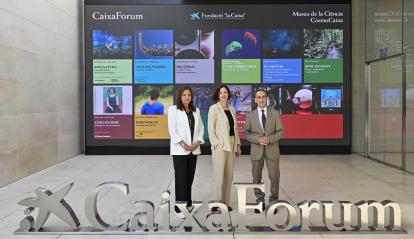
The ”la Caixa” Foundation has developed a multidisciplinary, innovative programme for its CaixaForum network of centres, the result of experience, rigour and hard work. It features both in-house productions and exhibitions in collaboration with leading cultural institutions, nationally and internationally. This unique model, embodied by the CaixaForum network, reflects the Foundation’s firm commitment to promoting knowledge, culture and science as drivers of social change.
In line with the programming of recent years, the ”la Caixa” Foundation continues to promote culture, art and science in a cross-disciplinary and complementary manner. Thus, CaixaForum centres and the CosmoCaixa Science Museum are consolidating their work within a single network and will be adding exhibitions that can also be seen in other parts of the country.
As is customary in the exhibition season at the CaixaForum centres and the CosmoCaixa Science Museum, the 2025–2026 season offers a wide range of proposals encompassing art, the humanities and scientific outreach.
CaixaForum Barcelona will host seven exhibitions during the 2025–2026 season, while the CosmoCaixa Science Museum will present another seven
Throughout the season, visitors to CaixaForum Barcelona will be able to enjoy the following exhibitions and programmes:
Visitors will also be able to continue accessing the permanent activities Symphony and Ravel’s Bolero in the space that the cultural centre in the Catalan capital dedicates to immersive experiences.
Meanwhile, this season, the CosmoCaixa Science Museum’s emblematic permanent space, its Universe Hall, will feature a huge mammoth fossil, offering visitors a chance to travel back to the Ice Age without leaving Barcelona, and will update certain elements to help visitors explore the laws of physics and learn more about the Sun. In addition, the CosmoCaixa Planetarium will introduce four new shows, including one designed for babies and another on eclipses to coincide with the total solar eclipse of 2026. Visitors can also continue to enjoy the Flooded Forest, the Antarctic Base, the Micrarium, and Clik, and the exhibition Extraterrestrials. Is There Life Outside Earth? Will remain on view.
Root for Nature opens the exhibition season at CaixaForum Barcelona
CaixaForum Barcelona will kick off its new season on 17 September with the exhibition Root for Nature. An immersive audiovisual experience that, until 6 April 2026, will offer a powerful and contemporary perspective on biodiversity through a striking journey that encourages positive action and environmental protection.
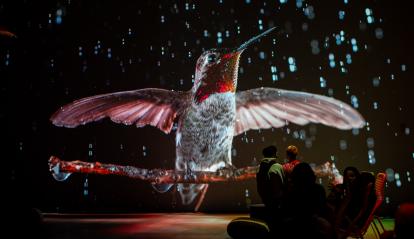
In collaboration with Oasis Immersion and National Geographic, the exhibition weaves an emotive and inspiring narrative that reminds us of the importance of preserving our planet’s habitats and strengthens the resolve to meet the commitments for protecting all ecosystems, challenges set out in the 2030 Agenda. Each gallery immerses visitors in its own unique world through stunning projections and surround sound.
This immersive audiovisual journey, which premiered in Montreal to mark the COP15 climate conference and is now arriving in Europe for the first time, is divided into three sections with a strong educational and emotional impact on visitors.
The exhibition Voices of the Pacific. Innovation and tradition, which will open on 6 November this year and run until 15 February 2026, pays tribute to the richness and diversity of the artistic traditions of the Pacific Islands peoples through 208 objects, most of them from the treasured collection of the British Museum.
Oceania is a complex tapestry of islands and cultures bound together by the Pacific. This ocean has not only been their means of subsistence, but has also inspired the development of their creativity. Fans and fishhooks, clubs and canoes, practically everything is beautifully crafted, with decorations imbued with spiritual meaning. This exhibition is the first in a series of shows forming part of the third major strategic partnership renewed by the ”la Caixa” Foundation and the British Museum to jointly organise exhibitions.


It will be followed by the exhibition [Rec]ollections: Life through Home Movies running from 2 December this year until 7 June 2026. Over the past few decades, home movies have captured fragments of everyday life and have become a repository of images preserving our collective memory. The exhibition celebrates more than a century of home filmmaking as an audiovisual heritage of incalculable sociological, historical and aesthetic value.
This exhibition explores the reasons why humans film themselves and traces the evolution of technology from early cine cameras to mobile phones. It also recovers previously unseen and sometimes counter-hegemonic stories and footage depicting past and contemporary times and customs. By building an alternative chronicle of this century through the eyes of anonymous families in which anyone might recognise themselves, the exhibition invites us to delve into the relationships between image, reality and memory, and to rethink our relationship with the camera.
![Henri Matisse, Marguerite au chat noir [Marguerite with black cat], beginning of 1910. Centre Pompidou, París. Musée national d’art moderne / Centre de création industrielle AM 2013-544.](https://imagenes-mediahub.fundacionlacaixa.org/files/image_414_626/files/fp/uploads/2025/08/26/68ada5434430f.r_d.689-1000-3007.jpeg)
On 26 March 2026, it will be the turn of the exhibition Chez Matisse. The Legacy of a New Approach to Painting, a collaboration with the Centre Pompidou in Paris. This occasion will offer an opportunity to explore the genius of the artist Henri Matisse, focusing on the career, evolution, reach and influence of the French painter.
Henri Matisse’s art reflects his wholly innovative approach to colour, his critical rethinking of the painting as a purely pictorial surface, and his sense of being “out of place”, both emotionally and politically. In other words, it expresses his break with established norms and his quest for a new way of seeing and representing the world. The exhibition devoted to Matisse marks the first show under the second major strategic partnership between the ”la Caixa” Foundation and the Centre Pompidou in Paris to jointly organise exhibitions.
The opening of the exhibition Out of focus. Another Vision of Art, in collaboration with the Musée de l’Orangerie in Paris, will be another highlight of the season, with this group show exploring the technique of blurring in art, particularly contemporary art. The opening will take place on 20 May 2026 until 27September 2026.
The exhibition takes as its starting point Monet’s Water Lilies series and the way the artist introduced the concept of blurring into art, using blurriness and imprecision as expressive elements. The show, which explores how this phenomenon became a new way of representing and understanding the world for later creators, features works by artists such as Alberto Giacometti, Gerhard Richter, Mark Rothko, Eva Nielsen, Claude Monet, Thomas Ruff, Alfredo Jaar, Soledad Sevilla, Christian Boltanski, Mame-Diarra Niang and Bill Viola, among others.
![Claude Monet, Le bassin aux nymphéas, harmonie rose [The water lily pond, pink harmony], 1900. Musée d’Orsay.](https://imagenes-mediahub.fundacionlacaixa.org/files/image_414_239/uploads/2025/08/26/68ada63bd1986.jpeg)
Long regarded as a paradigm of abstract painting, the Water Lilies series was also a forerunner of the large immersive installations that would follow. However, the blurred, out-of-focus effect that characterises the broad expanses of water in the canvases – and which was initially attributed to a visual impairment on Monet’s part – had never been analysed. Today, by contrast, this artistic technique is seen as a deliberate aesthetic choice and serves as the central thread running through the exhibition.
Renovation of spaces and new offerings at the CosmoCaixa Science Museum
For its part, CosmoCaixa continues to host its in-house exhibition Extraterrestrials. Is There Life Outside Earth? until 30 August 2026. This exhibition begins by placing us in the cosmos to explore the fascination inspired by the idea of extraterrestrial life and the worlds we have imagined beyond our own in art, film and literature, while also presenting possible futures through science and technology.
The exhibition route, which features interactive elements, models, real specimens, works of art and audiovisual material, offers an experience designed to stir the imagination with the thought that there may be other beings in the universe.

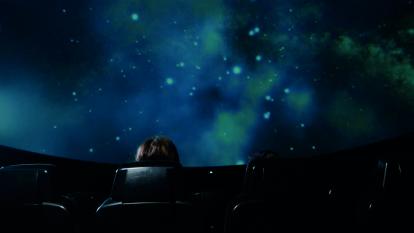
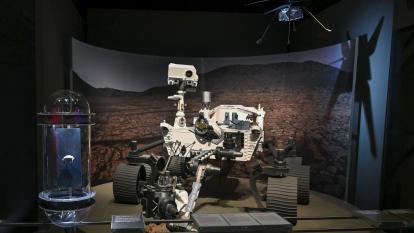
Beyond the exhibition itself, CosmoCaixa is committed to renewing its permanent space, the Universe Hall, which this season will feature the real fossilised skeleton of a Siberian mammoth measuring 6 metres in length and 3.5 metres in height. The museum will also bring physics closer to the public with new interactive elements for learning more about tornadoes, the Sun, Newton’s third law and zoetropes.
CosmoCaixa will also premiere four new shows at the Planetarium this year. One of them, Baby Symphony, is a multimedia production to be enjoyed in the Bubble Planetarium, combining instrumental music to playfully stimulate the sight and hearing of babies aged from 0 to 18 months.
Also on the programme are Kiru and the Mystery of the Lost Moon, a full-dome animated projection produced by the ”la Caixa” Foundation designed especially for children aged 3 to 6 to learn about asteroids, planets and stars while also helping them manage their fear of the dark.
Another new show, Polaris, explores the characteristics of the Earth’s poles, the similarities and differences between planets, the concept of gravity, and the tilt of our planet. Finally, 3clipse helps a non-specialist audience understand a total solar eclipse such as the one that will take place on 12 August 2026, and also provides information on the important role Spain plays in astronomical research, particularly in relation to our star.
End of the Rubens and Out of Frame exhibitions at CaixaForum Barcelona
In addition to this season’s new premieres, the centres are still hosting some exhibitions that opened at the end of the previous season, which visitors will be able to enjoy for a few more months.
Until 21 September, visitors to CaixaForum Barcelona can see the exhibition Rubens and the Flemish Baroque Artists, showcasing 62 works from the collections of the Museo del Prado. The display reflects the creative power of the leading figure of the Flemish Baroque in dialogue with other artists of his time, including Van Dyck, Jordaens and Brueghel.
Until 26 October, the exhibition Out of frame. Works by Rineke Dijkstra and Philippe Parreno will also remain open to the public. This joint display of two works from the ”la Caixa” Foundation Contemporary Art Collection interprets Goya and Rembrandt, offering two distinct approaches to experiencing an artwork, through the eyes of Rineke Dijkstra and Philippe Parreno.
The ”la Caixa” Foundation has recently acquired these two audiovisual works for its Contemporary Art Collection, each offering a unique take on Goya’s Black Paintings series and Rembrandt’s The Night Watch.
Throughout this season, CaixaForum Barcelona will continue to host Ravel’s Bolero and Symphony in the permanent space dedicated to immersive experiences at the cultural centre of ”la Caixa” Foundation in the Catalan capital.
Upcoming premieres on the CaixaForum+ platform
CaixaForum+, the ”la Caixa” Foundation’s free platform for cultural and scientific outreach, will include new content in the coming months featuring leading names from the worlds of art, film and other fields. It will also serve as the online venue for major festivals, preview new seasons of certain series, and premiere documentary films on architecture, nature, science and research.
The Sleeper, the Lost Caravaggio is a documentary thriller directed by Álvaro Longoria that tells an extraordinary story: that of a Caravaggio painting which hung for years in a living room without its owners knowing its true value, and of its journey to becoming one of the most coveted pieces among art collectors and dealers worldwide. The film, which will premiere on 21 September, and which competed at the Málaga Film Festival, is produced by Morena Films, Mediacrest, Estrategia Audiovisual and Fandango, with associate production by CaixaForum+ and support from RTVE.
For the first time, CaixaForum+ will serve as the online venue for Barcelona’s Documentary Film Festival on Art, DART, running from 18 December to 18 January 2026. Thanks to the collaboration launched with DART in 2023, the platform has already premiered six films selected by the festival in 2025, and on 9 October it will add another six titles exploring the work of artists such as Hilma af Klint and David Hammons, among others.
It will also feature documentaries on the history of Arte Povera (Poor Art) and the rise of NFTs.
The documentary RED, directed by Alejandro Marín, traces the evolution of AIDS from its emergence to the present day. It is a work that addresses the stigma surrounding HIV, a field in which science has advanced, but where society still clings to prejudice. Featuring the direct testimony of people living with HIV and the expert insights of researchers from IrsiCaixa, the film offers an honest and moving journey through memory, stigma and the challenges that still lie ahead. The project was produced in collaboration with IrsiCaixa, a research centre jointly promoted by the ”la Caixa” Foundation and the Catalan Government Department of Health.
Journalist Xavier Aldekoa, a specialist in the African continent, presents the fascinating documentary The Last Refuge of the Elephants on the Kaza project, produced by CaixaForum+. For more than a decade, five Southern African nations have worked together to create Kaza, the world’s largest cross-border wildlife reserve, spanning an area the size of Spain. In this film, Aldekoa travels to one of the planet’s last paradises in search of the elephants’ final Eden.
In collaboration with BARQ – Barcelona International Architecture Film Festival, and in anticipation of the events marking the 2026 World Capital of Architecture, CaixaForum+ will premiere five documentaries:
- Building Bastille – The Tangled and Improbable Story of the Opera Bastille, directed by Leif Kaldor, recounts with generous doses of humour and epic flair how the little-known architect Carlos Ott won the competition for the Paris Opera Bastille in 1982 against all odds, thanks to a misunderstanding that has since become a legendary chapter in architectural history.
- In Monobloc, Hauke Wendler reveals, through a journey around the world, the secrets of the best-selling chair of all time: the Monobloc.
- Richard Leplastrier: Framing the View, by Anna Cater, portrays how Richard Leplastrier applies his simple lifestyle to architecture and brings creative solutions to his distinctive houses.
- Architecture and science fiction come together in A Machine to Live In, by Yoni Goldstein and Meredith Zielke, a film that creates a dreamlike and experimental portrait of Brasilia, a futuristic metropolis built on the utopian ideal of abolishing social classes.
- And Georgian filmmakers Mariam Chachia and Nik Voigt delve into the Abastumani Tuberculosis Hospital in Magic Mountain, where it seems that certain invisible forces emerge from nature.
Stage director Àlex Rigola talks about his work and career, and shares his perspective on the performing arts in the opening episode of the second season of La Plaça, a co-production between CaixaForum+ and Teatre Lliure. He is the first featured guest in this series, which introduces a different performing artist from the Lliure’s programme in each episode. On this occasion, he will be interviewed by writer and journalist Milena Busquets.
And Pere Gimferrer, undoubtedly one of the most distinctive authors on the Spanish literary scene, will be another prominent figure in CaixaForum+ content this new season with the documentary Pere Gimferrer. Retrat d’un artista adolescent (Pere Gimferrer: Portrait of an Adolescent Artist) directed by Poldo Pomés and Lídia Penelo.
A programme of activities designed for everyone
CaixaForum and CosmoCaixa will invite the public to take part in spaces for meeting and exchange that foster critical thinking, learning, interaction and social cohesion. These are some of the ideas that shape the activities programme and a number of the key projects planned for the coming season:
- Experimentation. Meaningful learning environments are offered in the fields of visual and performing arts, literature, science, design and technology, among others, guided by professionals from the educational, cultural and scientific sectors. For example: Artefact, an artistic and pedagogical project for all audiences.
- Innovation and creativity. The activities programme draws on national creative talent and showcases it through a variety of initiatives that bring together art, science and technology in programmes and activities, such as Meetings with creators or Summer Nights and CosmoNits.
- Dissemination. Conferences, dialogues and live talks will be organised on history and thought, art and design, film and literature, music, basic science, science and society, the environment, food and health, with leading researchers and thinkers, both national and international. Examples include the Greats of science, at CosmoCaixa, or the festival of expanded literature In Other Words at CaixaForum.
- Participation. Promotion of projects that invite people to experiment, learn actively and co-create. Some examples include: Explainers and Science with rhythm at CosmoCaixa, and First cinema at CaixaForum.
- New approaches to the exhibitions. A series of proposals enhance the visit to the exhibitions with thematic tours, artistic interventions, spaces for experimentation, dynamic tours and family visits.
- Music. Music is approached in the broadest possible way, telling its story, bringing it closer to children, encouraging participatory projects and offering a comprehensive and varied programme of concerts featuring classical, electronic.
![Henri Matisse, "Le Rêve" [The dream], may 1935. Centre Pompidou, París. Musée national d’art moderne / Centre de création industrielle AM 1979-106.](https://imagenes-mediahub.fundacionlacaixa.org/files/image_340_340/files/fp/uploads/2025/08/26/68ada56c233a2.r_d.806-1000-2109.jpeg)

![Henri Matisse, Marguerite au chat noir [Marguerite with black cat], beginning of 1910. Centre Pompidou, París. Musée national d’art moderne / Centre de création industrielle AM 2013-544.](https://imagenes-mediahub.fundacionlacaixa.org/files/image_340_340/files/fp/uploads/2025/08/26/68ada5434430f.r_d.689-1000-2469.jpeg)
![Claude Monet, Le bassin aux nymphéas, harmonie rose [The water lily pond, pink harmony], 1900. Musée d’Orsay.](https://imagenes-mediahub.fundacionlacaixa.org/files/image_340_340/uploads/2025/08/26/68ada63bd1986.jpeg)


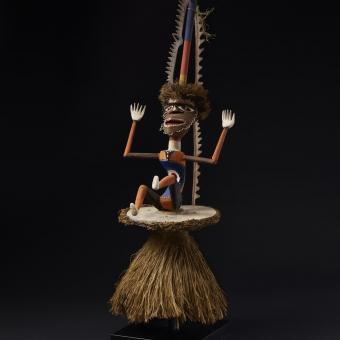
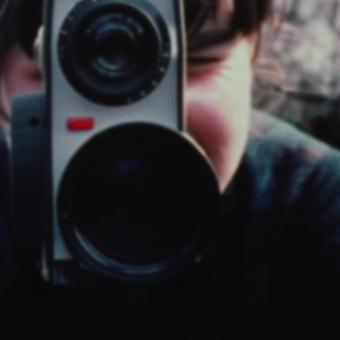
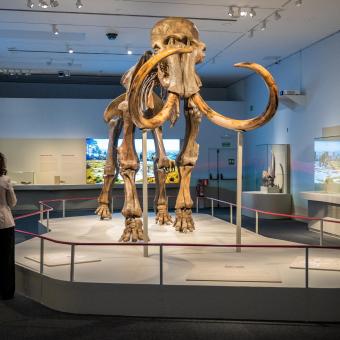

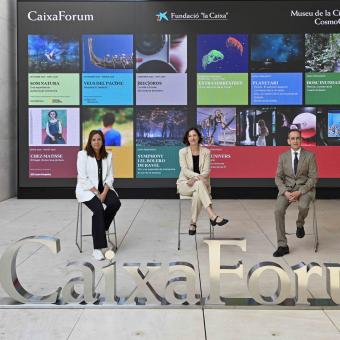
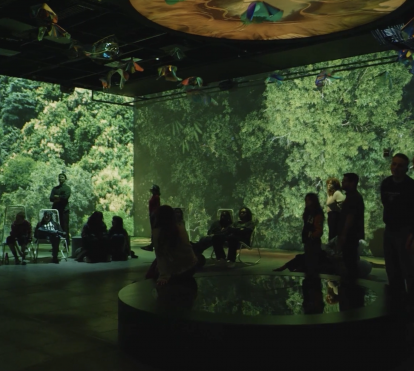
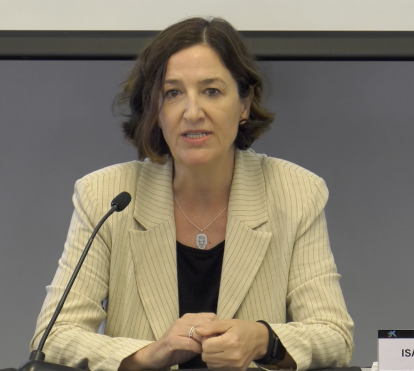
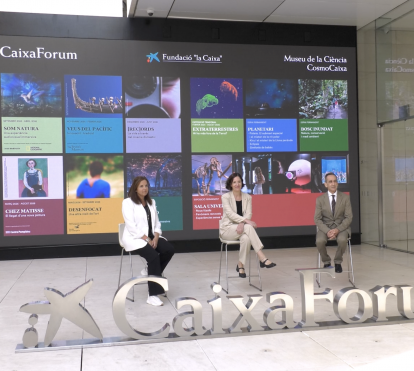
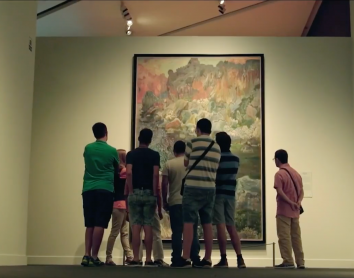
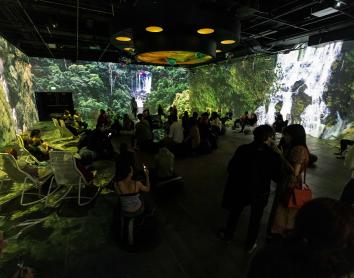
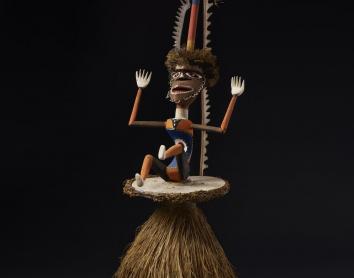

![Henri Matisse, Marguerite au chat noir [Marguerite with black cat], beginning of 1910. Centre Pompidou, París. Musée national d’art moderne / Centre de création industrielle AM 2013-544.](https://imagenes-mediahub.fundacionlacaixa.org/files/image_354_278/files/fp/uploads/2025/08/26/68ada5434430f.r_d.689-1000-2571.jpeg)
